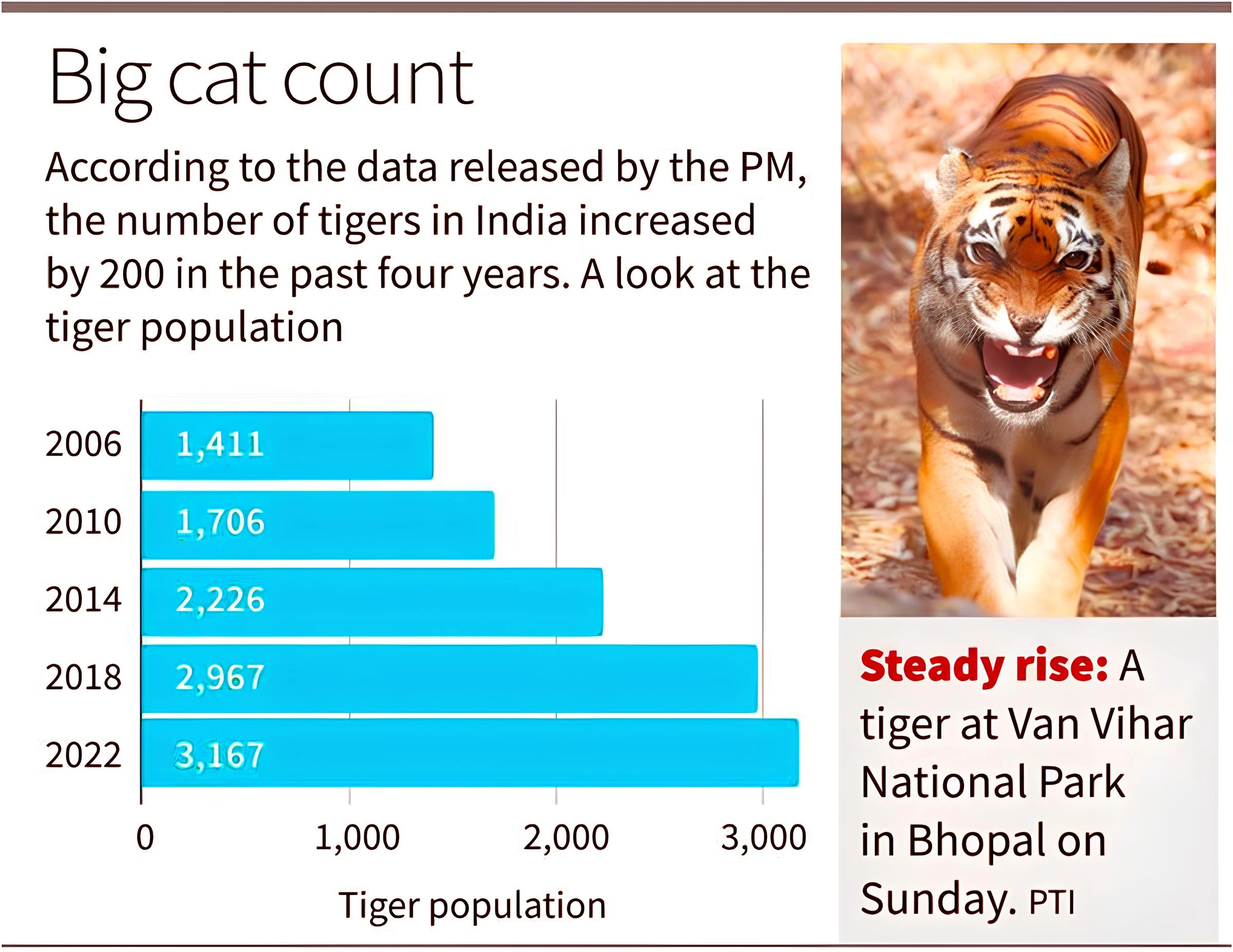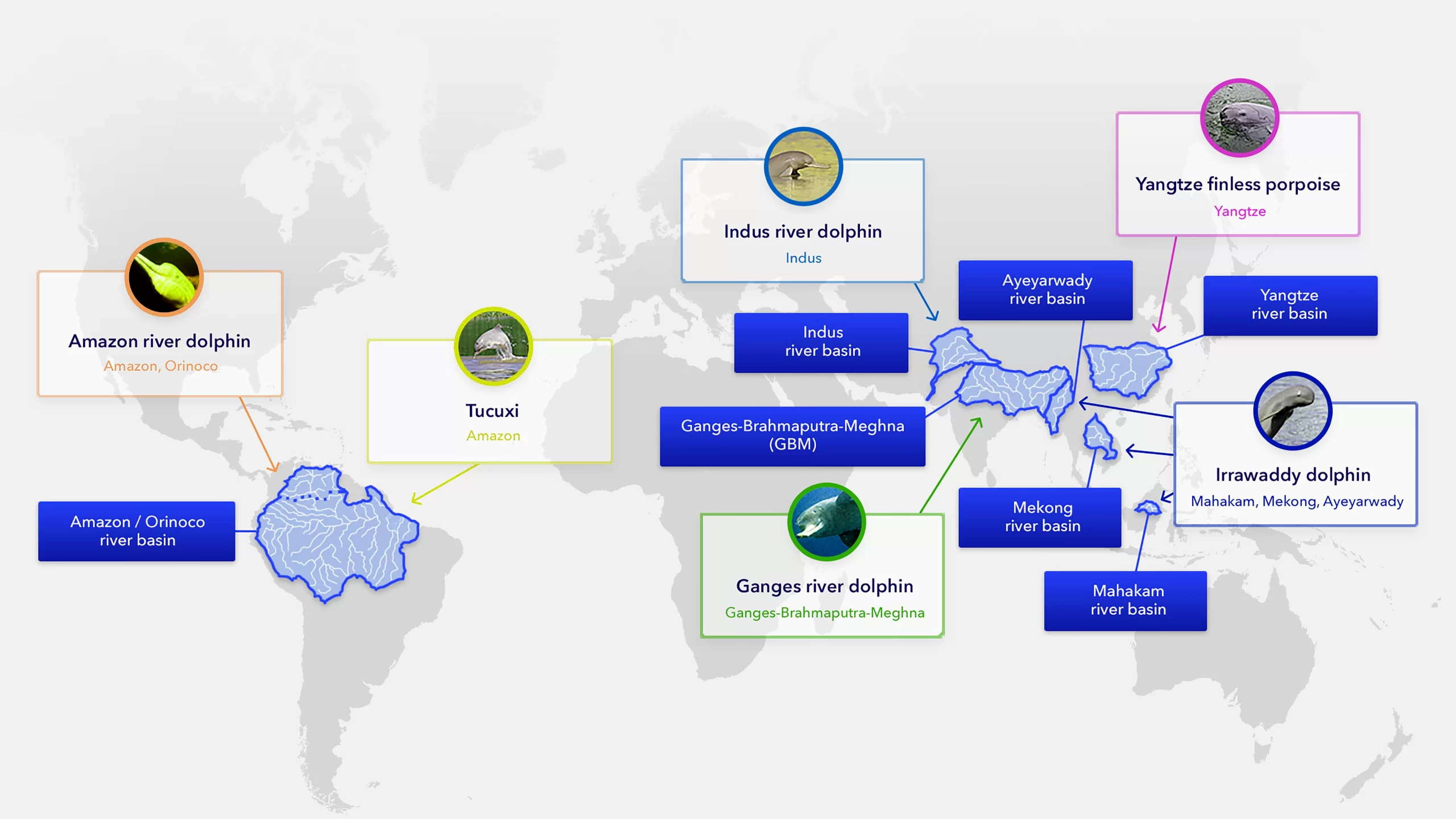News Source: Business Standard
News Source: Economic Times

News Source: PIB
News Source: Livemint

About Gangetic Dolphin
Steps Taken to Protect Dolphin”
|
|---|
News Source: National Geographic
News Source: The Indian Express
| Relevancy for Prelims: Renewable Energy Sources, Battery Energy Storage Systems (BESS), Central Electricity Authority, International Renewable Energy Agency (IRENA), and International Solar Alliance.
Relevancy for Mains: Reliable Renewables – Power Stability with Storage, Current Status of Renewable Energy in India, Storage Solutions for renewable energy in India, Challenges of the renewable energy transition in India and Government’s initiatives. |
|---|
Current Status of Renewable Energy in India
|
|---|
Opportunities From the Renewable Sector
|
|---|
Also read: World Energy Outlook 2023: India’s AC Power Demand to Surpass Total Energy Use in Africa
What are the initiatives for the promotion of renewable energy in India?
|
|---|
Addressing the intermittency challenges of renewable energy in India requires a comprehensive approach, including robust energy storage systems, grid infrastructure revamping, and strategic policy initiatives, to ensure a sustainable and reliable transition towards a cleaner energy future.
| Prelims Question (2015)
With reference to the Indian Renewable Energy Development Agency Limited (IREDA), which of the following statements is/are correct? 1. It is a Public Limited Government Company. 2. It is a Non-Banking Financial Company. Select the correct answer using the code given below. (a) 1 only (b) 2 only (c) Both 1 and 2 (d) Neither 1 nor 2 Ans: (c) |
|---|
| Mains Question (2020): Describe the benefits of deriving electric energy from sunlight in contrast to conventional energy generation. What are the initiatives offered by our government for this purpose? |
|---|
| Relevancy for Prelims: Food Inflation, Consumer Food Price Index, Consumer Food Price Inflation (CFPI), Consumer Price Index (CPI), Agriculture GDP, Global Hunger Index 2023, and MSP.
Relevancy for Mains: India’s Food Inflation Challenge: Causes and Solutions. |
|---|
| Subgroups | Description | Rural | Urban | Combined |
| a. | Cereals and products | 36.71 | 28.51 | 34.16 |
| b. | Pulses and products | 6.25 | 6.11 | 6.20 |
| c. | Oils and fats | 8.98 | 9.44 | 9.13 |
| d. | Egg, fish and meat | 6.50 | 7.38 | 6.77 |
| e. | Milk and products | 16.53 | 21.59 | 18.10 |
| f. | Condiments and spices | 4.10 | 3.79 | 4.00 |
| g. | Vegetables | 12.64 | 12.93 | 12.74 |
| h. | Fruits | 3.65 | 6.14 | 4.43 |
| i. | Sugar etc. | 4.64 | 4.11 | 4.47 |
| Total Weights | 100.00 | 100.00 | 100.00 |
Impact of Food Inflation
|
|---|
Also Read: India’s Food & Nutrition Security: Time to Adopt a Three-Sided Approach
Addressing the multifaceted challenges of food inflation in India requires a comprehensive approach, encompassing global market dynamics, climate resilience, effective policy measures, and investments in supply-side reforms to ensure long-term food security and economic stability.
| Prelims Question (2015)
In India, markets in agricultural products are regulated under the (a) Essential Commodities Act, 1955 (b) Agricultural Produce Market Committee Act enacted by States (c) Agricultural Produce (Grading and Marking) Act, 1937 (d) Food Products Order, 1956 and Meat and Food Products Order, 1973 Ans: (b) |
|---|
| Mains Question: Discuss how the Green Revolution technology made a remarkable contribution in transforming the Indian economy and helped India achieve food security. (250 Words, 15 Marks) |
|---|
Maharashtra Withdraws GRs on Hindi as Third Langua...
Statistical Report on Value of Output from Agricul...
Skills for the Future: Transforming India’s Work...
National Turmeric Board HQ Inaugurated in Nizamaba...
ECI Moves to De-List 345 Inactive Registered Unrec...
MNRE Issues Revised Biomass Guidelines Under Natio...
<div class="new-fform">
</div>